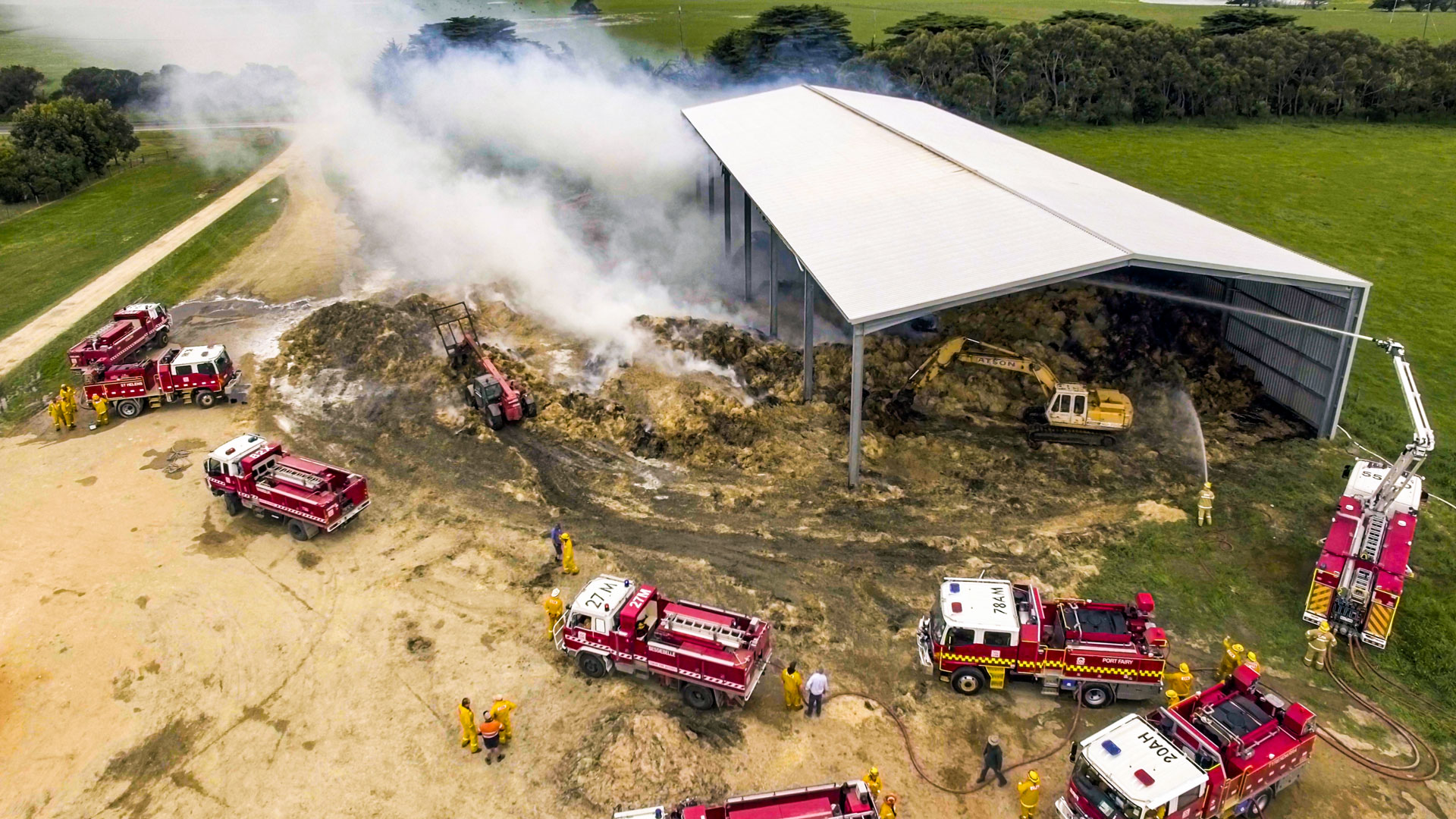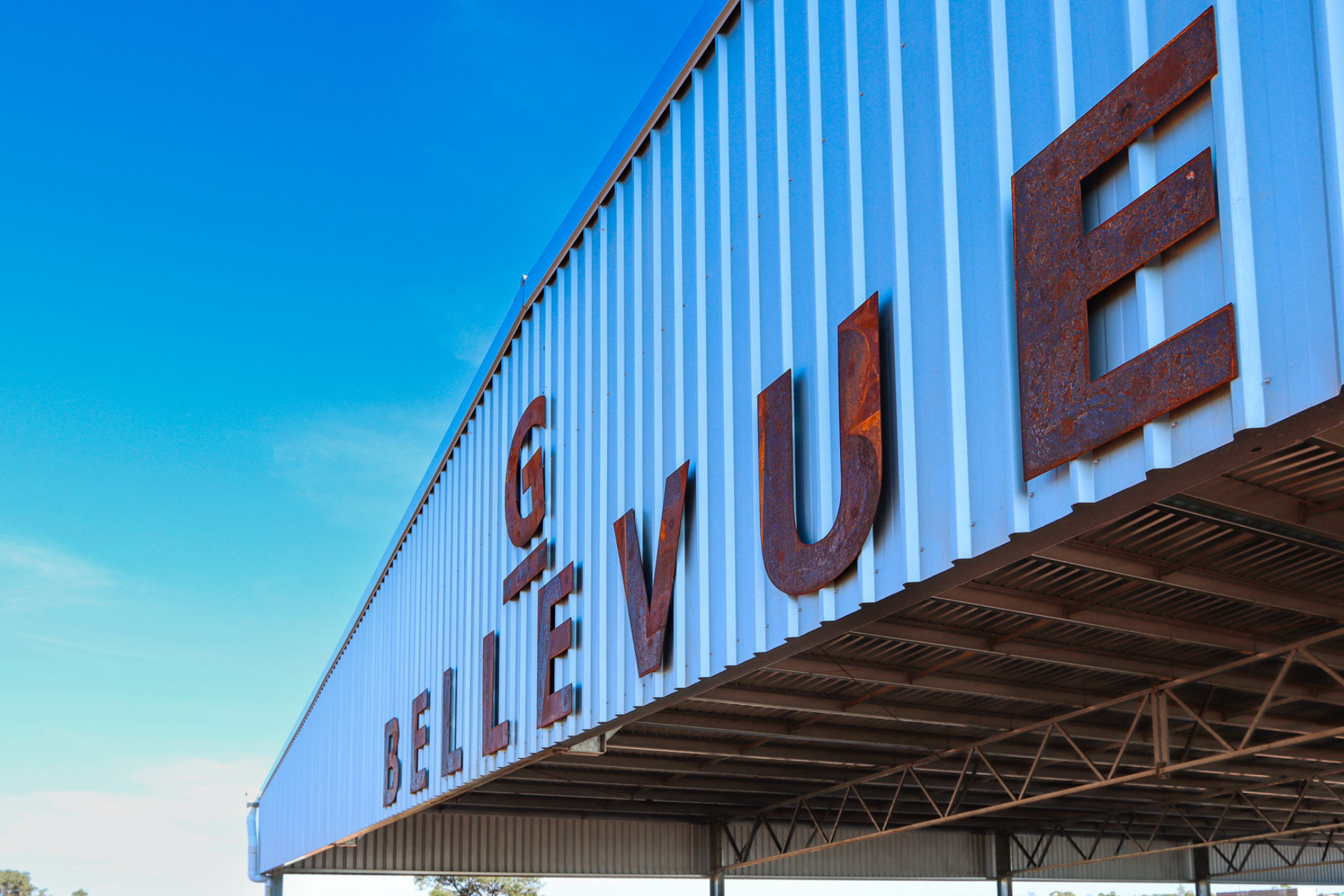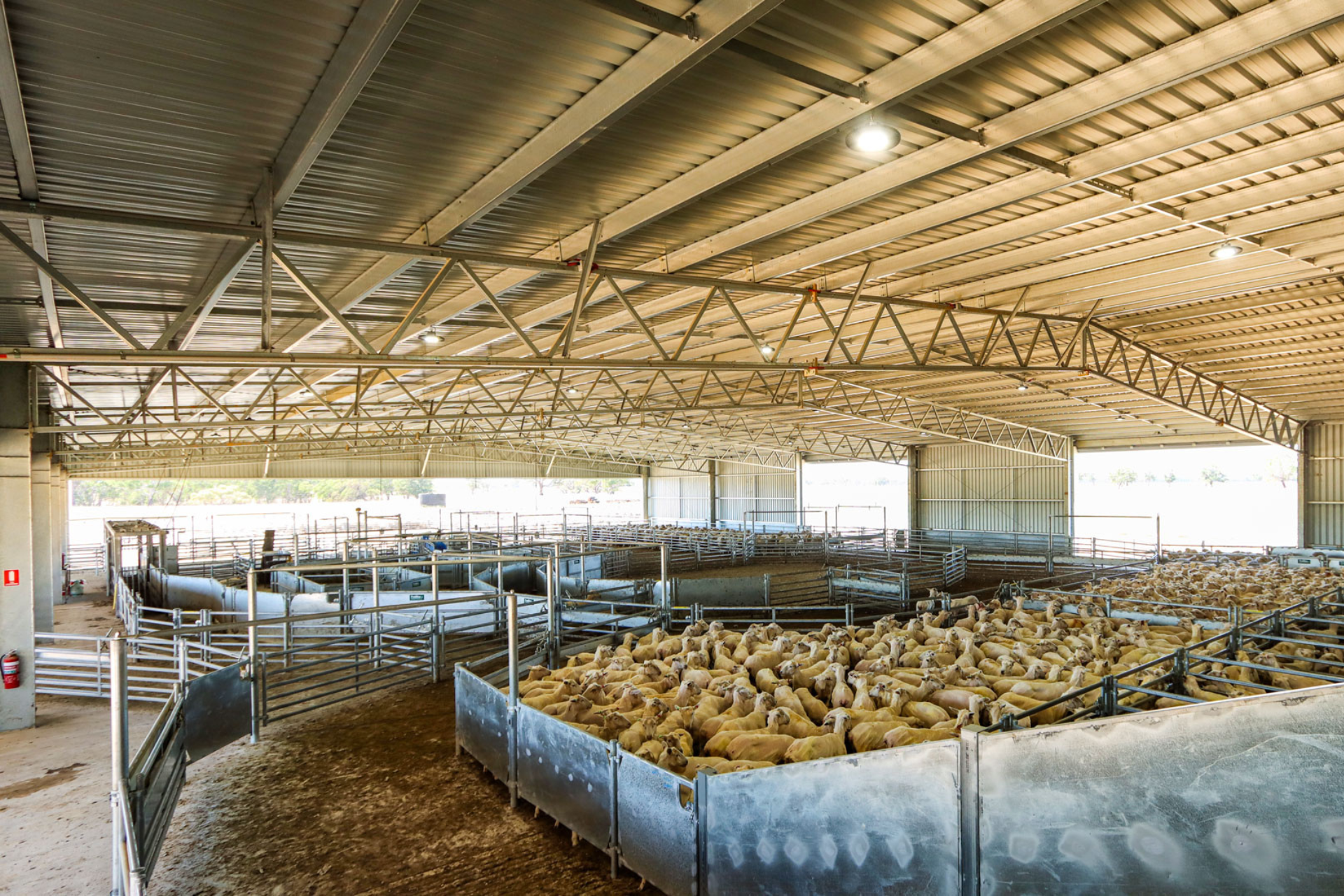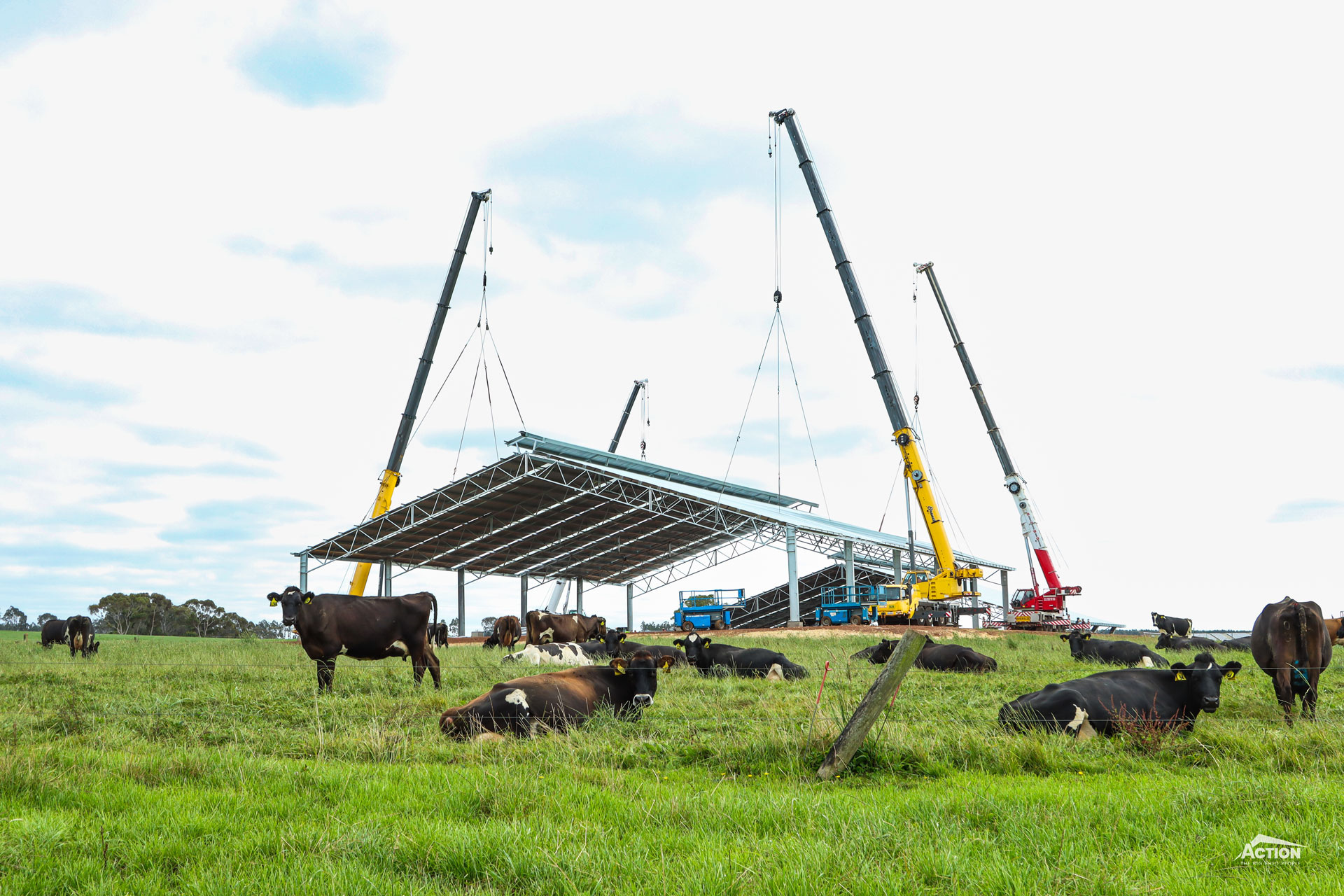Here is your back-to-basics guide on what causes hay shed fires and the steps you can take to minimise the risk.
Every year hay shed fires occur. For example, so far this year in Victoria the CFA have attended more than 50 incidents.
As a result, most farmers would have some hay fire experience or story, whether it is a near miss with heating bales or witnessing a haystack combust on a neighbouring farm.
While relatively commonplace, this doesn’t detract from the financial and emotional impact.
Watching years’ worth of work go up in flames or losing valuable livestock fodder can be overwhelming. Hay shed fires seem to occur at the busiest time of the year too, which (along with the insurance paperwork) increases both the stress and the inconvenience of the ordeal.
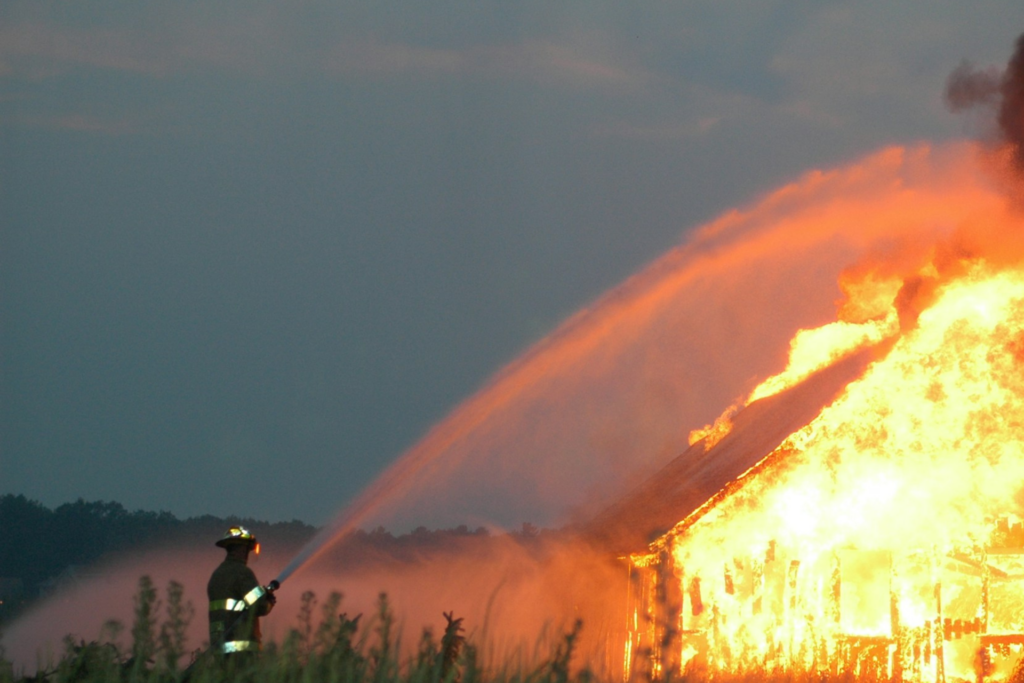
A hay shed fire can also be a significant financial loss, particularly if the fire spreads to other hay sheds, infrastructure and equipment. This makes having your insurance up-to-date incredibly important!
It is also important to understand what causes hay shed fires and how you can help prevent them from occurring in the first place.
In this article, we analyse the three main causes of hay shed fires, including high moisture content (whether at baling or after) and discuss proactive steps you can take to prevent a fire in your hay shed.
Top 3 Causes Of Hay Shed Fires
There are typically three main reasons why a hay shed fire occurs; the hay has been baled incorrectly, the hay has been stored incorrectly or an arson incident.
1. Hay Is Baled Incorrectly
Arguably the top cause of hay shed fires is due to the hay being baled with a high moisture content, above the recommended percentage.
The recommended moisture content is usually about 15%-18% depending on factors like the type of hay, baling conditions and bale size.
A high moisture content increases the chance of spontaneous combustion occurring.
2. Hay Is Stored Incorrectly
High moisture content strikes again!
When hay is exposed to moisture after baling due to poor storage (or before the bales have even made it into the shed) this can kickstart the microbial activity and chemical reactions that lead to spontaneous combustion.
3. Arson
Unfortunately, arson incidents still occur.
You can tick all the boxes by making sure your hay bales have the correct amount of moisture and are stored out of the weather, but a hay shed fire can start through no fault of your own.
While there may be little you can do about it, there are some preventative measures you can take. We discuss these in the next section of the article.
5 Ways To Prevent Hay Shed Fires
1. Bale Correctly
First and foremost, your hay needs to be baled at the correct moisture content.
Additionally, baling at the correct moisture content helps ensure your hay is saleable. This leads us to the next point which is for farmers who are buying and storing hay.
2. Make Informed Buying Decisions
If you are buying hay for your livestock to be stored on-farm, make sure you make an informed buying decision.
Know the history of your hay such as the moisture content at baling, how it has been stored and how long it has been stored for. It is also good practice to request a current feed test to check moisture content.
Buying through reputable platforms such as Feed Central where hay is assessed and this information readily available is recommended.
3. Store Hay Properly
Quality hay storage. This is a topic that we’re passionate about!
The best way to store your hay is to store it in a dedicated three-sided hay shed. This will prevent dry matter loss and maintain the quality of your hay.
A well-designed and built hay shed will ensure the hay comes out of the shed in the same condition as it went in.
Refer to the Designing A Fire-Safe Hay Shed section of this article for ways to achieve this.
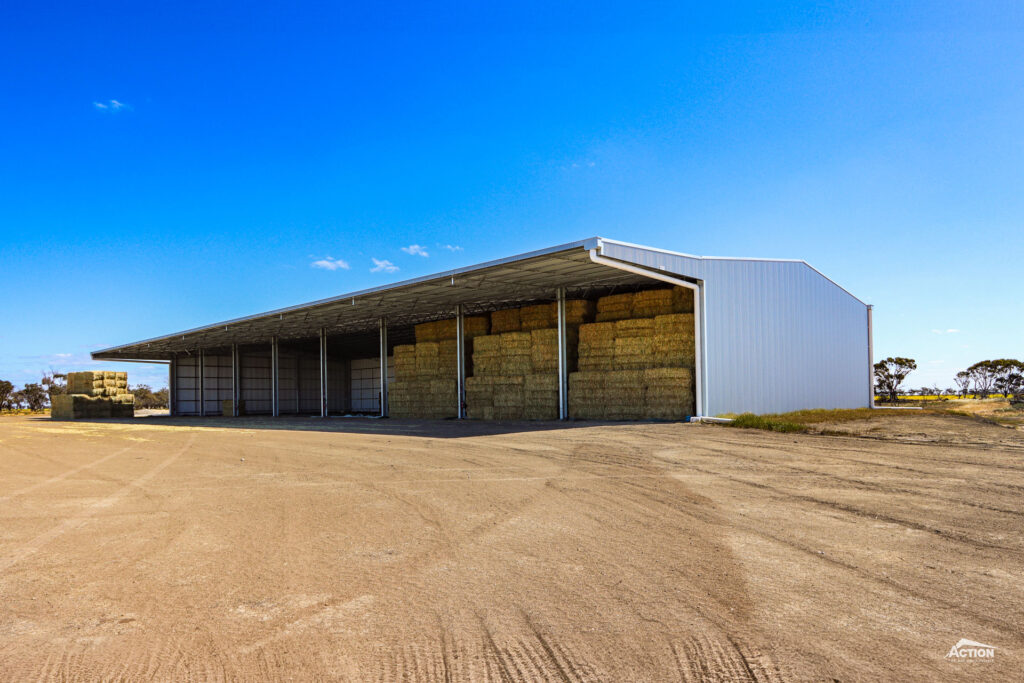
4. Test & Monitor
Prevention is better than cure, and an important step in preventing hay shed fires is to regularly test hay and monitor moisture levels and any signs of heating.
While this can be time-consuming, it is well worth taking the time to avoid the emotional and financial stress – and volunteer firefighting hours!
There are also real-time hay temperature and moisture monitoring systems available – such as HayTech – that can be installed. This is ideal for large-scale storage.
5. Prevent Unauthorised Access
Taking measures to prevent unauthorised access is one way to help deter arson attacks on your hay shed.
This could include installing security cameras, motion monitors and relevant signage.
That’s a summary of five simple ways to help prevent hay shed fires.
Next up we delve a little deeper into spontaneous combustion, what to do if your hay is high-risk and fire-safe hay shed designs.
Understanding Spontaneous Combustion Of Hay
What exactly is spontaneous combustion of hay? How does it happen?
Spontaneous combustion of hay occurs when the hay has a high moisture content, and this causes the hay to “breathe” and sugars break down releasing moisture and heat.
This creates ideal conditions for mould and bacteria which contributes to moisture and heat in the hay. The heat builds until the bale smokes and bursts into flames.
Spontaneous combustion is usually not an issue with properly cured hay unless it is exposed to excessive rain after being baled. This is because dried ‘cured’ hay has a lower number of microorganisms that create this heat/fermentation cycle.
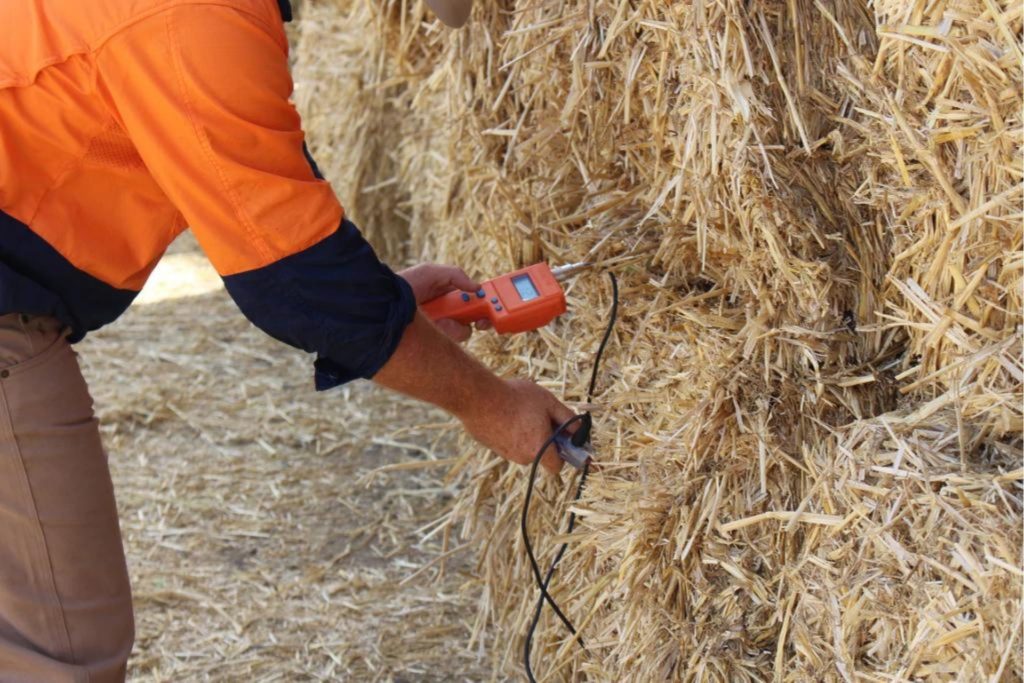
How To Know If Your Hay Is High Risk & What To Do
The best way to find out if your hay is high risk is to test and monitor the hay.
There are several ways to do this including using a crowbar or moisture probe. It is also important to know the signs of heating hay such as steam rising from the hay, condensation on the shed roof, mould growth, slumping stacks and an unusual or burning smell.
If you do have at-risk or susceptible hay bales, remove these from your shed – but only if it is safe. When the hay is already too hot or nearly too hot to touch, moving it will expose the bale to oxygen and cause it to combust.
If you suspect this is the case or if you have any concerns about your hay, notify your local fire authority and ask for advice.
Designing A Fire-Safe Hay Shed
Good hay shed design and preparation is an excellent preventative measure. Here are several points to keep in mind when planning your new hay shed build to ensure the risk of fire is minimised:
- Select a site away from other storage sheds, equipment, fuel and chemicals.
- Make sure the site is well-prepared and allows rainwater to effectively drain away.
- Choose wide bay spacings to provide adequate airflow between the stacks and ensure the bales are easily accessible for testing.
- Address fire design requirements such as installing fire extinguishers and water tanks with the required CFA fittings.
- Include a custom gutter system so that downpipes aren’t required down the face of the column where they could easily be damaged, and so that rainwater is directed away from the hay.
- Consider installing infrared heat detectors and moisture monitors to have real-time results and security cameras to deter unauthorised access.
- Don’t store machinery or chemicals in your hay shed
Keeping Your Hay Shed Insurance Up-To-Date
Remember to keep your shed insurance up to date!
Make sure the insurance policy reflects the current value of your shed and its contents. Our building consultants are more than happy to provide a current shed quote for insurance value purposes.
It is crucial to know what you are covered for and what will impact the coverage. For example, does it depend on how much hay is stored in one place? If equipment is stored in the shed, will it be covered?
We hope this discussion has been helpful and thought-provoking. Below are some other resources that may be useful.
Relevant Resources
- What Are The Farm Shed Fire Design Requirements?
- Hay Shed Kit Sizes & Price List
- Hay Shed Guide (PDF Download)
- Farm Fire Safety Guide (PDF Download)
That’s a general overview of what causes hay shed fires and some practical suggestions on how to reduce the risk. For more resources like this article, the latest brochures and customer stories, browse the Learning Hub.
Or if you have any questions about hay shed designs, sizes or prices, call us on 1800 687 888.

